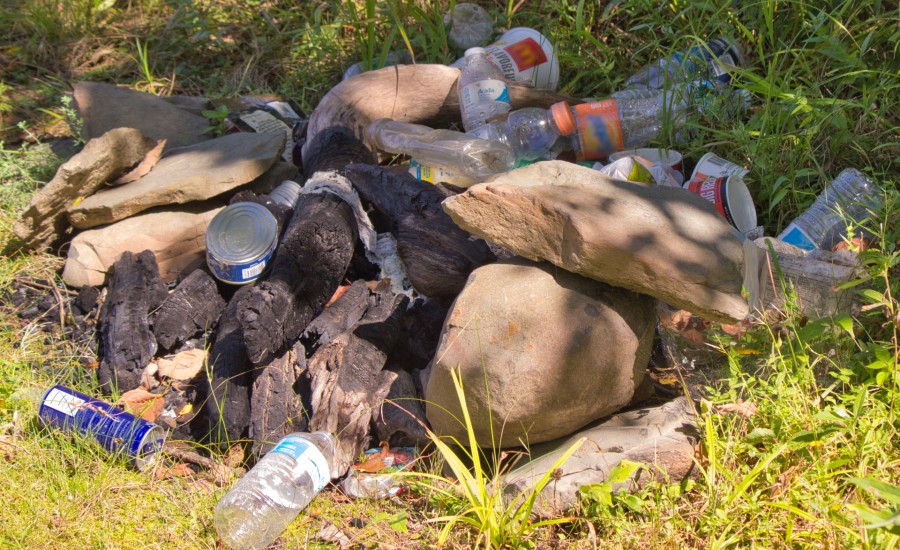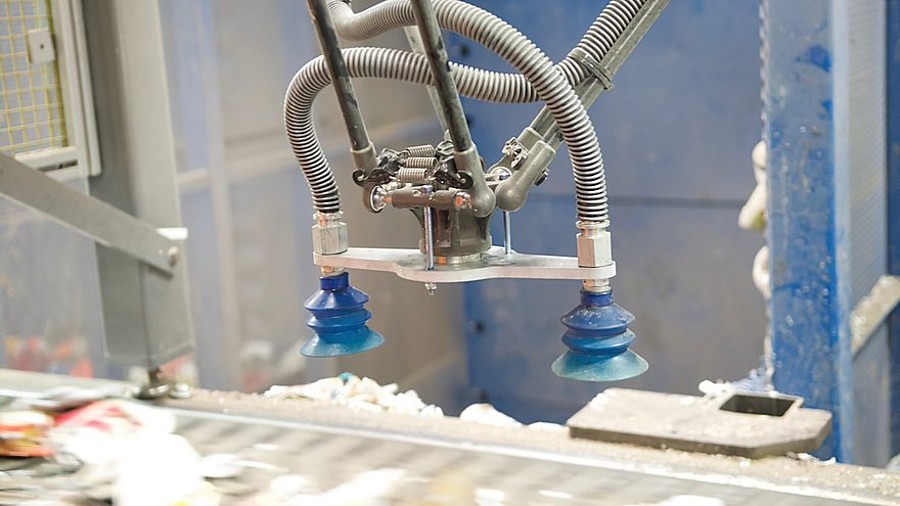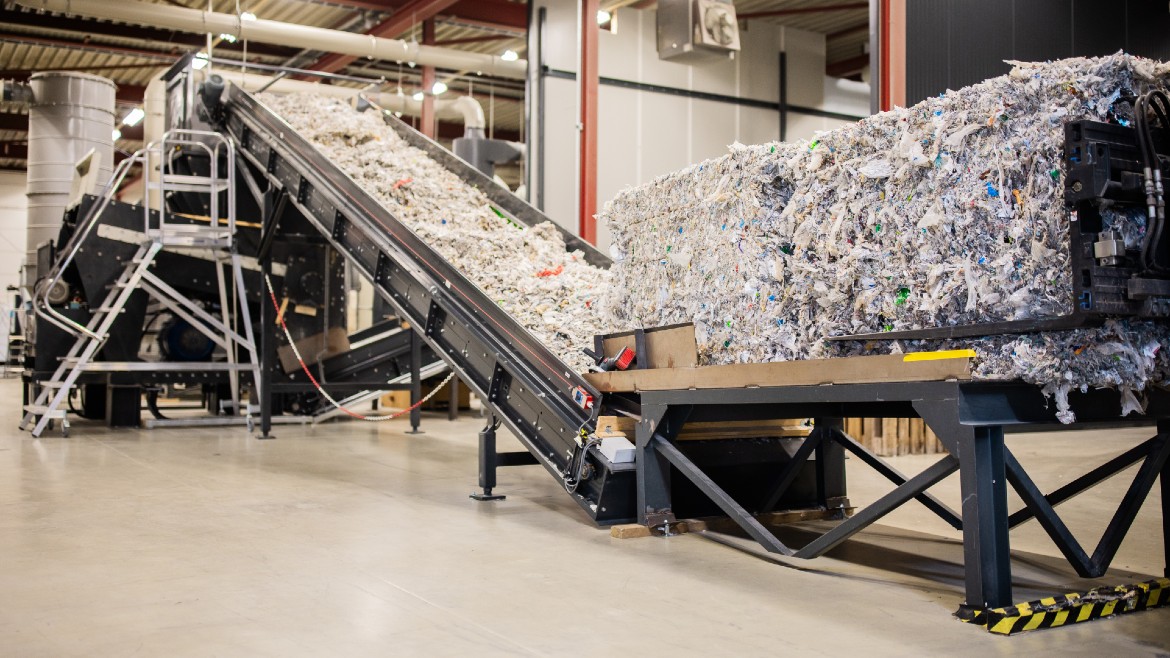With recent Earth Day activities in the rear-view mirror, we’re reminded that recycling food packaging and creating sustainable materials is a must—e.g., reducing plastic content, using environmentally friendly and biodegradable materials, and extending recycling to an even broader range of food packaging types over a wider geographical area.
According to a recent McKinsey & Company report, an imperative for retailers is to make more of their packaging sustainable. According to the study, by 2030 retailers with the boldest sustainability ambitions plan to increase their share of recycled content in packaging by 50%, reduce their virgin-plastic use by 50% and move to 100% reusable, recyclable or compostable materials in their private label range where they have the most control over their outputs.
Indeed, in an April 2024 study conducted by Tetra Pak, three out of the top five commitments made by packagers to address sustainability challenges include the reduction of plastic usage. Half of the surveyed businesses pinpointed consumer demand as the main catalyst behind implementing new sustainable solutions within the manufacturing and processing arena.
In a separate Tetra Pak consumer packaging study, 74% of respondents intended to buy brands that focused on environmental topics, while 42% believe that an environmentally sound package justifies a higher price, thus providing the industry with a reassuring case for adopting a business model that reduces environmental impact.
In the April 2024 study, 77% of businesses expressed a willingness to accept cost-related tradeoffs associated with the implementation of sustainable manufacturing and processing solutions, despite the industry facing ongoing macro-economic challenges.
While some manufacturers complain about the cost of sustainable plastics being more expensive than less sustainable, virgin materials, the McKinsey study also points out a potential problem with sustainable materials—availability. If all retailers could meet their sustainability pledges, the demand for recycled plastics (around 90 million tons) will likely far outpace the global supply (around 60 million tons) by 2030. This will put upward pressure on prices and erode retailers’ margins.
Plastics the Major Environmental Issue
Plastics in the form of bottles, food packaging and grocery store bags have not only become an eyesore on the environment but also represent an ever-present danger to animal and human ingestion in the form of microplastics. Beverage cartons and cardboard packaging, however, offer a solution that can be recycled—even if cartons are lined with plastic or aluminum foil coatings.
 Plastic bottles, perceived by nearly a third of consumers in a Tetra Pak study to be the least environmentally friendly, are littered in our parks without thought—which unless picked up and discarded will be around for several human lifetimes. Photo courtesy of Wayne Labs.
Plastic bottles, perceived by nearly a third of consumers in a Tetra Pak study to be the least environmentally friendly, are littered in our parks without thought—which unless picked up and discarded will be around for several human lifetimes. Photo courtesy of Wayne Labs. According to Tetra Pak research, when consumers were asked which types of beverage packaging they believe are the most environmentally sound, 41% of respondents chose carton packaging, 37% glass bottle, 8% plastic bottle, 8% metal can, 3% plastic cup and 3% plastic pouch. When asked which types of beverage packaging they believe are the least environmentally sound, 32% said plastic bottle, 23% plastic pouch, 17% plastic cup, 13% metal can, 9% glass bottle and 6% carton package.
Of course, not all beverages are compatible with cartons lined with plastic and/or aluminum coatings. For example, carbonated sodas, beer and water are typically packaged in plastic, glass bottles or aluminum cans. Aluminum has its own problem. In the U.S., aluminum can recycling has averaged about 51% over the last 10 years, according to the Can Manufacturers Institute. And reusing recycled aluminum saves more than 90% of the energy needed to make a new can from primary aluminum.
Beverage Cartons: Recycle the Cardboard and Upcycle the Plastic and Aluminum
According to a 2023 PMMI report, “Moving to Sustainable Packaging Materials: Closing the Innovation Gap,” recycled content and recyclability are a priority, and it’s important to make it easy for end consumers to know what to do with products when they have finished with them.
The ubiquitous refrigerated milk/juice gable-top carton and aseptic cartons (used for shelf-stable products like soups, juice and beans) with polymer coatings and/or aluminum linings—depending on application—meet recycled content and recyclability needs. For example, Tetra Pak cartons are made primarily of plant-based, renewable materials, according to Angela Peterson, Tetra Pak spokesperson. In addition to FSC-certified paperboard, sugarcane-based polymers are used for certain package caps and coatings.
But can used beverage cartons (UBCs) be recycled? The answer is yes, but not all geographical areas are yet recycling UBCs. The Carton Council in the U.S. was set up by four leading carton manufacturers: Elopak, Practiv Evergreen, SIG and Tetra Pak. The council is focused on working with those throughout the recycling value chain to increase access to carton recycling (growing the infrastructure) and participation (increasing carton recycling rates). The good news is that in many cases, the recycling techniques used for beverage cartons can also be applied to other polymer lined items such as fiber-based drink cups, trays, etc.
When the Carton Council efforts began, only 18% of households could recycle their cartons where they lived. Now 62% can (or more than 78 million households). The carton recycling rate was 6% and now it is 20%. UBCs are recycled and turned into new products via several end markets in North America, as well as abroad.
Recycling or Upcycling?
When “recycled” by consumers, UBCs are sorted and baled at materials recovery facilities (MRFs). In many cases, should UBCs be mixed in with other recycles, optical and NIR scanners can be used along with robotics to sort out the UBCs. When recycled, UBCs can be turned into new paper products (such as paper towels, toilet paper or packaging materials) and “upcycled” into building materials, for example, wall board, roofing materials or even furniture pieces.
 Robotic sorters assisted by NIR and optical sensors can ferret out UBCs from mixed recycle collections. Image courtesy of Carton Council of North America.
Robotic sorters assisted by NIR and optical sensors can ferret out UBCs from mixed recycle collections. Image courtesy of Carton Council of North America.In Europe, Stora Enso, a provider of renewable packaging products and biomaterials, and Tetra Pak jointly invested 29 million euros to build a new recycling line for UBCs at Stora Enso’s facility in Ostrołęka, Poland. The line will have an annual capacity of 50,000 tonnes (55,116 U.S. tons) of UBCs.
“Stora Enso is recycling UBC, recovering fibers, plastic and aluminum,” says Peter Hengesbach, product end-of-life compliance manager, recyclability at Stora Enso Packaging Materials Division. “At Stora Enso’s site, the UBC is processed, and the fibers are separated from the plastic barrier (including aluminum) and caps. Fibers are used for containerboard production on-site, and the so called PolyAl component (plastic, aluminum, and caps) is moved to another site, managed by Plastigram, where the polymers (PE and PP) and the aluminum are separated and recovered.”
“There are various end uses of the recovered LDPE film and the rigid PP/PE, like pipes, pallets and benches where it replaces virgin raw materials, typically using injection molding applications,” Hengesbach adds. “Aluminum is used as an additive for casting, for example. There are also applications where PolyAl is used as a mixture. As of today, the recycled materials are not fed back to beverage or food applications, but new technologies are improving the quality, and regulations are changing—potentially enabling the use of recycled materials in sensitive applications.”
 PolyAl flakes are separated from the cardboard after the pulping line and will go on to be used in building materials and furniture. Photo courtesy of Tetra Pak.
PolyAl flakes are separated from the cardboard after the pulping line and will go on to be used in building materials and furniture. Photo courtesy of Tetra Pak.In the U.S., UBCs are upcycled into new applications. Kelly Green Products manufactures Kelly Green Board, a sustainable, high-performance roof and wall cover board made primarily from recycled aseptic and gable top cartons. Using a zero-waste process with a minimal carbon footprint, Kelly Green Board uses every part of the carton, including caps and straws, and is made without water, formaldehyde glues or hazardous chemicals.
In November of last year, the Carton Council and Kelly Green Products announced a new facility in Connecticut, which is operational 24 hours a day year round, converting used cartons into hail- and moisture-resistant building supplies. Made mostly with thin layers of aluminum and polyethylene, each truckload of Kelly Green Board diverts 30,000 pounds of cartons from landfills.
Moving Plastic out of Packaging for Food and Beverages
There is a general trend to reduce the amount of plastic in packaging in Europe, Hengesbach says.
“A general trend is to move away from two-sided, plastic-coated materials because for other than UBC, there is only a low recycling capacity in specialized recycling mills available in many countries,” Hengesbach says. “Alternative solutions and innovative barriers (e.g., water soluble) are developed to ensure the functionality of the packaging, but also enable efficient recycling. Also, biodegradable barriers are gaining relevance in end-uses where material recycling is not the preferred end-of-life option, but instead composting due to heavy food contamination issues, for example.”
Bagikan Berita Ini














0 Response to "Upcycling a Good Application for Recycled Content from Beverage Cartons - Food Engineering Magazine"
Post a Comment